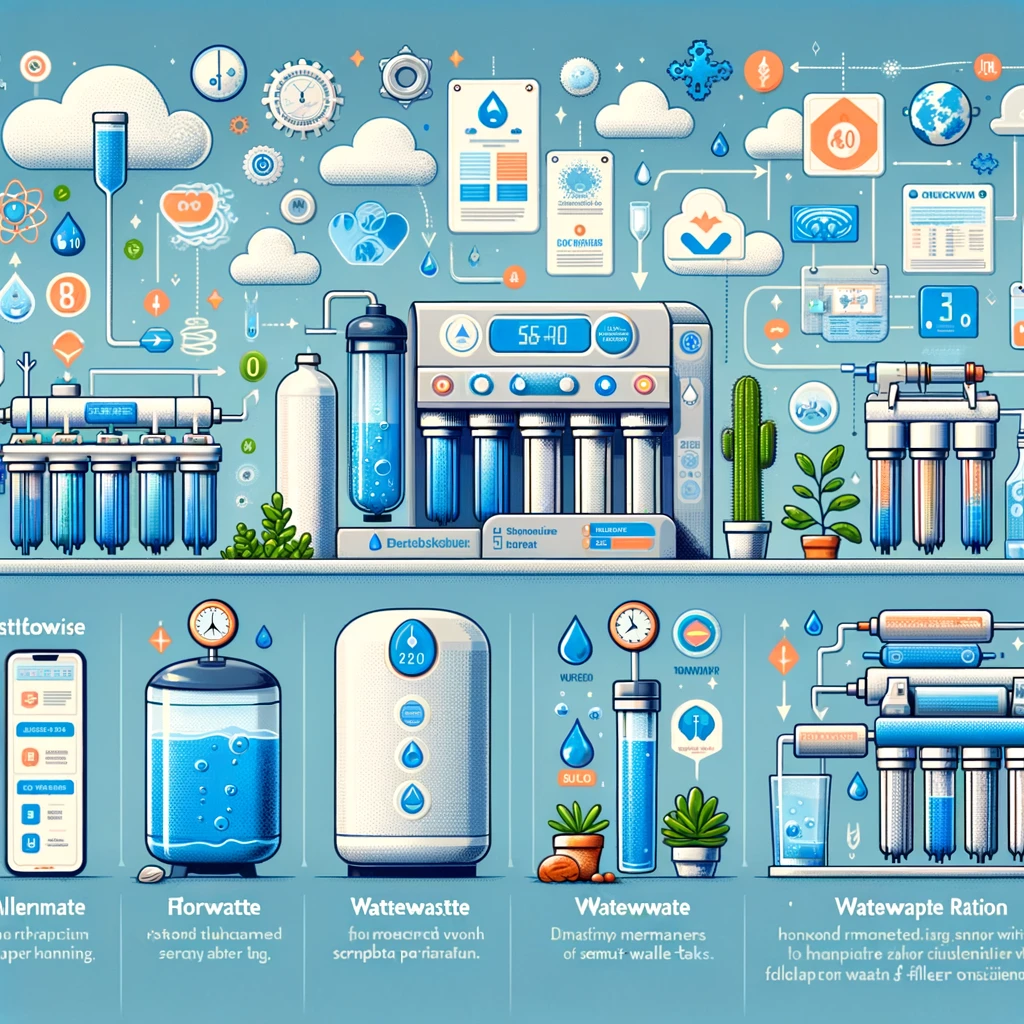As the importance of clean, safe drinking water becomes increasingly recognized, many people are turning to reverse osmosis systems for their homes. These devices offer a high level of filtration, ensuring that the water we consume is free from contaminants and impurities. This article will guide you through the essential considerations when choosing a reverse osmosis system, so you can make an informed decision for your household’s health and well-being.
Understanding Reverse Osmosis System
What is Reverse Osmosis?
At the heart of the Reverse Osmosis System is reverse osmosis technology. To understand this, let’s first look at osmosis. In osmosis, water naturally moves from a region of low solute concentration to a higher one through a semi-permeable membrane. Reverse osmosis does the opposite. By applying physical pressure, it forces water from a high-concentration side through a membrane to the low-concentration side. This process effectively filters out impurities, delivering pure water.
Types of Reverse Osmosis System
With or Without Storage Tank
Reverse osmosis purifiers come in two main types: with and without storage tanks. The choice between the two often depends on the RO membrane’s flow rate. Lower flow rate membranes require a storage tank to compensate for the slower filtration process. Tankless models, such as SimPure T1-400UV and Waterdrop G3P800, are increasingly popular for their space-saving benefits and reduced risk of secondary pollution, although they can be less reliable in situations like power outages.
Single vs. Dual Outlet
Additionally, RO purifiers are available in single and dual outlet models. Single outlet purifiers produce only pure water, while dual outlet models offer both ultrafiltered and pure water. The dual system is advantageous for households that require different water types for drinking and other uses like washing.
The RO Membrane Filter
The core of any RO purifier is the RO membrane. Its microscopic pore size (0.0001 microns) ensures that almost all impurities are filtered out. The capacity of RO membranes varies, with common options ranging from 50 to 1000 gallons per day. Higher capacity membranes can eliminate the need for a storage tank but may come with a higher cost.
Waste Water Ratio & Water Efficiency
An essential factor in choosing an RO system is its wastewater ratio. This ratio indicates the volume of waste water produced for every unit of purified water. A lower ratio means better efficiency and less water waste, a crucial factor considering the environmental impacts.
Additional Features of Reverse Osmosis System
Modern RO systems often include additional features such as filter life indicators and smart connectivity. These features enhance convenience and maintenance, allowing users to monitor system performance and filter life through simple indicators or even smartphone apps.
Operating Cost
The ongoing cost of an RO system is primarily determined by the lifespan and cost of its filters. It’s crucial to understand the replacement cycle and cost of filters before purchasing. Additionally, consider the rated total purified water volume for a more accurate estimate of when filters will need replacement.
Making the Right Choice
When selecting an RO water purifier, consider the following:
- Your Household’s Water Needs: Assess the amount of purified water your household requires daily to choose the right capacity.
- Space Constraints: Consider whether a tank or tankless system is more suitable for your kitchen space.
- Water Quality: Test your water to understand the level of purification needed. This can influence the type of RO system you choose.
- Budget and Long-term Costs: Balance the initial cost with long-term operating expenses, including filter replacements and potential water wastage.
- Additional Features: Decide if features like filter life indicators or smart technology are important for your convenience.
- Environmental Considerations: Opt for a system with a better wastewater ratio if environmental impact is a concern.
Conclusion
Choosing the right RO system is a balance between your specific needs and the features available in the market. By understanding the technology, evaluating different types, and considering your household’s requirements, you can select a system that provides safe, clean water while being cost-effective and environmentally responsible. Remember, the best system is the one that fits seamlessly into your daily life and meets your water quality goals.
